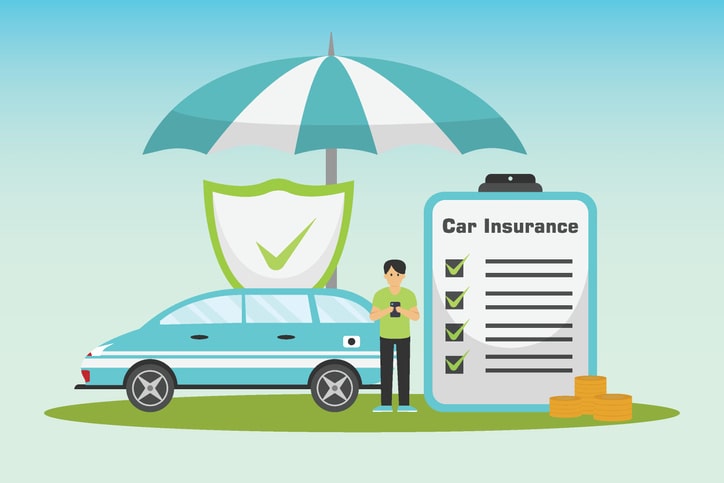Peeling Back The Layers Of Car Insurance Coverage
Understanding car insurance can feel like untying a knotted ball of string. It’s complex. But let’s simplify it. Think of car insurance as a safety net, ready to catch you if you fall financially after a car accident or theft. This net has different threads, each offering unique protection. Let’s unravel these layers to see what’s beneath the surface of a standard car insurance policy.
Breaking Down Types Of Coverage
Most car insurance policies include several types of protection.- Liability Insurance: Pays for damage you cause to others.
- Collision Coverage: Fixes your car after a crash.
- Comprehensive Coverage: Covers theft and non-crash damage.
- Personal Injury Protection: Helps with medical costs for you and passengers.
- Uninsured/Underinsured Motorist Protection: Steps in when the at-fault party can’t pay.
Myth Vs. Reality: What’s Actually Covered?
People often misunderstand what their policy includes. Let’s set the record straight with some common examples.| Myth | Reality |
|---|---|
| Personal belongings stolen from your car are covered. | No, this is usually under home or renters insurance. |
| All accidents are covered no matter what. | No, there are exclusions like reckless driving. |
| Using your car for business is covered. | Not typically. Commercial insurance is needed. |
| Natural disasters are always covered. | Only with comprehensive coverage. |
Liability Insurance: The Non-negotiable Foundation
Understanding Your Legal Coverage
Knowing the legal requirements for liability insurance is a must. Each state has its own rules, but all aim to protect everyone on the road. This part of your policy pays for the other person’s expenses if you are at fault. It’s not about your car or your injuries; it’s about taking responsibility for damages you cause.Bodily Injury And Property Damage Essentials
Two key terms you’ll hear with liability insurance are bodily injury and property damage. What do these cover? Let’s break it down:- Bodily Injury Liability: Pays for medical expenses, lost income, and pain and suffering of others injured in a crash you caused.
- Property Damage Liability: Handles the repair or replacement of other people’s property. This usually means fixing someone else’s car, but it might also include things like fences or buildings.
Comprehensive And Collision: Beyond The Basics
Understanding the ins and outs of Comprehensive and Collision insurance is crucial for car owners. These coverages are key to protecting your vehicle beyond the basic liability insurance. They cover a range of incidents that could affect your car, providing peace of mind against the unexpected. Let’s dive into how these coverages work and why they’re important for every car owner.
Protecting Your Vehicle From Non-crash Damage
Comprehensive insurance guards against damage not caused by a crash. This includes various scenarios that could happen to your car without you behind the wheel. With comprehensive insurance, you’re protecting your investment from the following:- Theft or Vandalism: Protects your car if someone steals it or intentionally damages it.
- Weather Damage: Coverage includes natural disasters like tornadoes, hurricanes, or hailstorms.
- Animal Collisions: If an animal suddenly crosses the road and you hit it, comprehensive covers repairs.
- Falling Objects: Your car is safe if a tree branch or another object falls on it.
Collision Coverage: Repairing Or Replacing Your Car
On the other hand, Collision coverage is about your car and other objects colliding. Whether it’s another vehicle or a fence, collision coverage steps in. It covers your vehicle’s repair costs or, in severe cases, its replacement. Here’s what collision coverage typically handles:- Accidents with Other Vehicles: This includes collisions with cars, trucks, or buses, regardless of who’s at fault.
- Single-Car Accidents: Covers damage from flipping over or hitting a pothole.
- Collisions with Stationary Objects: If you crash into a lamp post, guardrail, or building, this coverage helps.
Extra Protection: Uninsured And Underinsured Motorist Coverage
Car insurance policies come with various types of coverage. Extra Protection: Uninsured and Underinsured Motorist Coverage is a critical component. This coverage steps in when you’re in an accident with a driver who either lacks insurance or has inadequate coverage.
Why It Matters More Than You Think
Many assume that other drivers on the road carry the required insurance. Yet, this isn’t always the case. Uninsured and Underinsured Motorist Coverage guards you against these risks:- Financial security in the event of costly accidents.
- Protection against those with minimal coverage.
- Peace of mind knowing you’re covered despite others’ insurance status.
Navigating Incidents With Uninsured Drivers
When you collide with an uninsured driver, this coverage offers a safety net. Here’s how:- It covers expenses for your injuries.
- Your vehicle repairs get paid without out-of-pocket costs.
- You avoid the hassle of legal action to recover costs.
Additional Features: Towing, Rental, And Personal Injury
Car insurance goes beyond the basics. Imagine your car breaks down, you get into an accident or need a ride while your car’s in the shop. That’s where towing, rental, and personal injury come in. These add-ons keep you safe and mobile, no matter what happens on the road. Let’s dive into these life-saving features.
Personal injury protection, also known as PIP, handles medical bills:
The Perks Of Roadside Assistance And Towing Coverage
Roadside assistance and towing coverage are your best friends in a jam. Here’s why:- Flat tire? Dead battery? Roadside help is a call away.
- Towing gets your car to the nearest repair shop without extra stress.
- Locked out? Locksmith services included.
Rental Reimbursement And Personal Injury Protection Details
Rental reimbursement covers your transport while your car’s out of action:| Feature | Benefit |
|---|---|
| Car Rental | Get a temporary car |
| Cost Coverage | Insurance pays, you save money |
- Got hurt in a car accident? Medical expenses are taken care of.
- Can’t work? Lost wages are recovered.
- Affords peace of mind with added financial protection.
